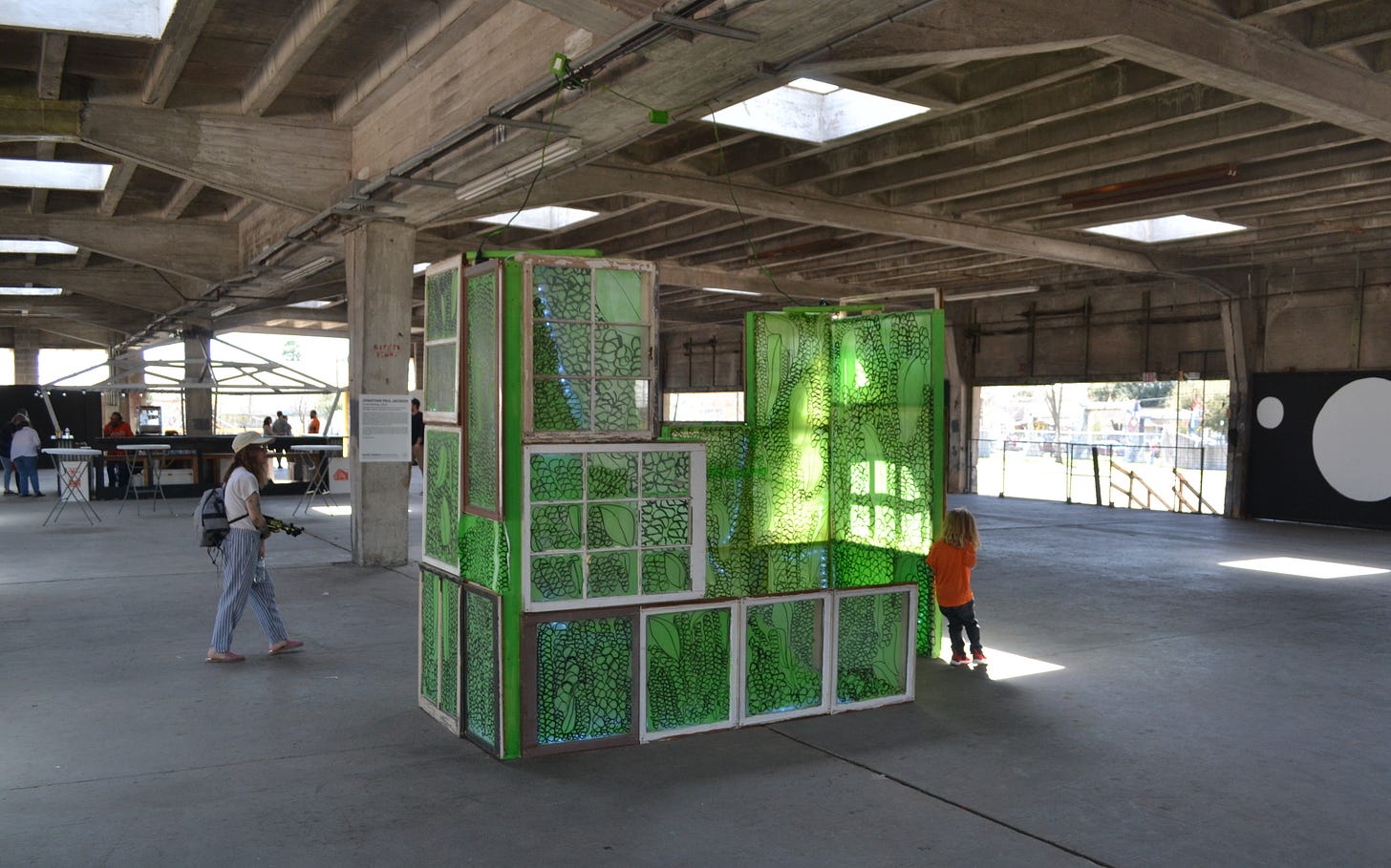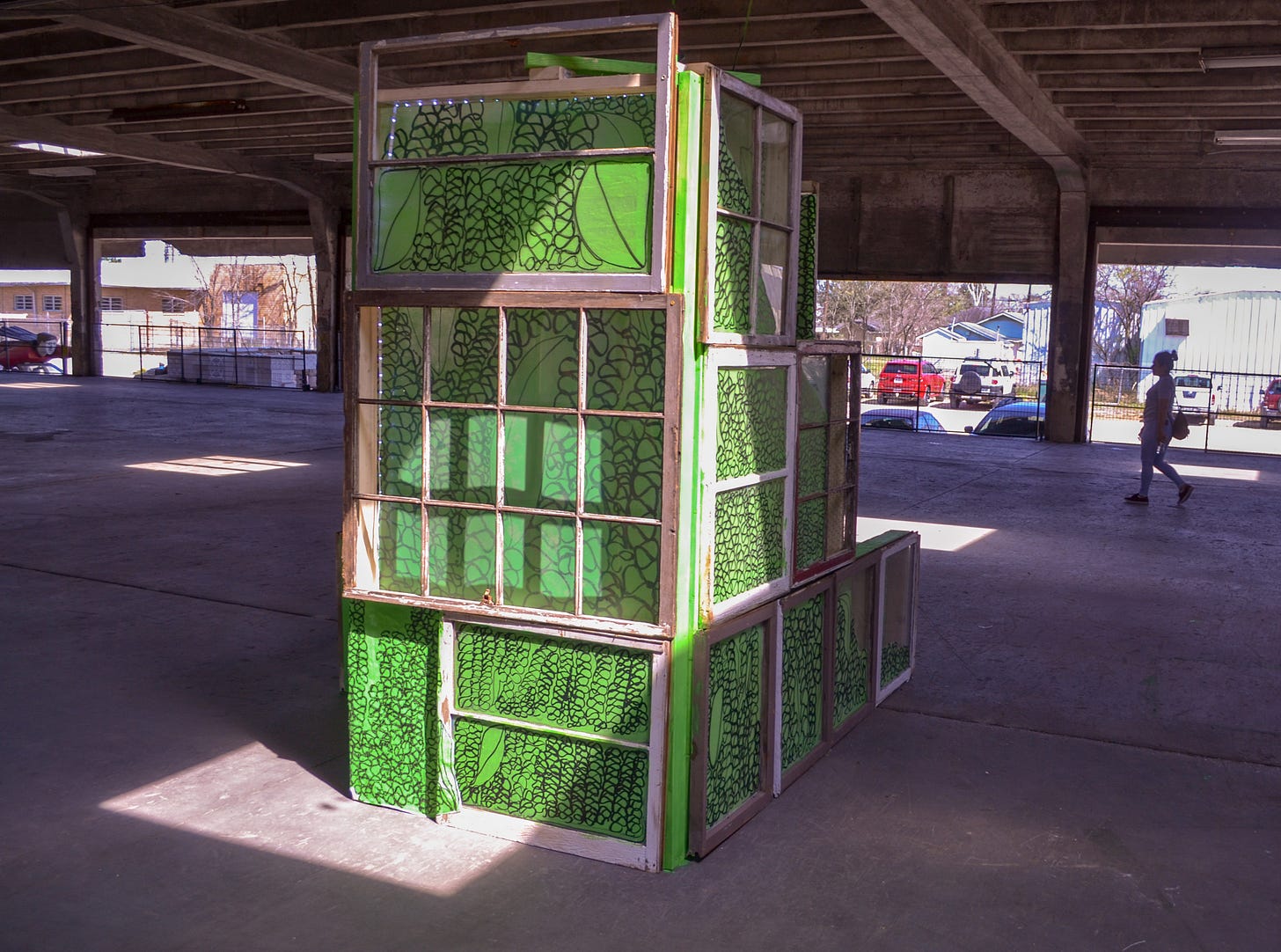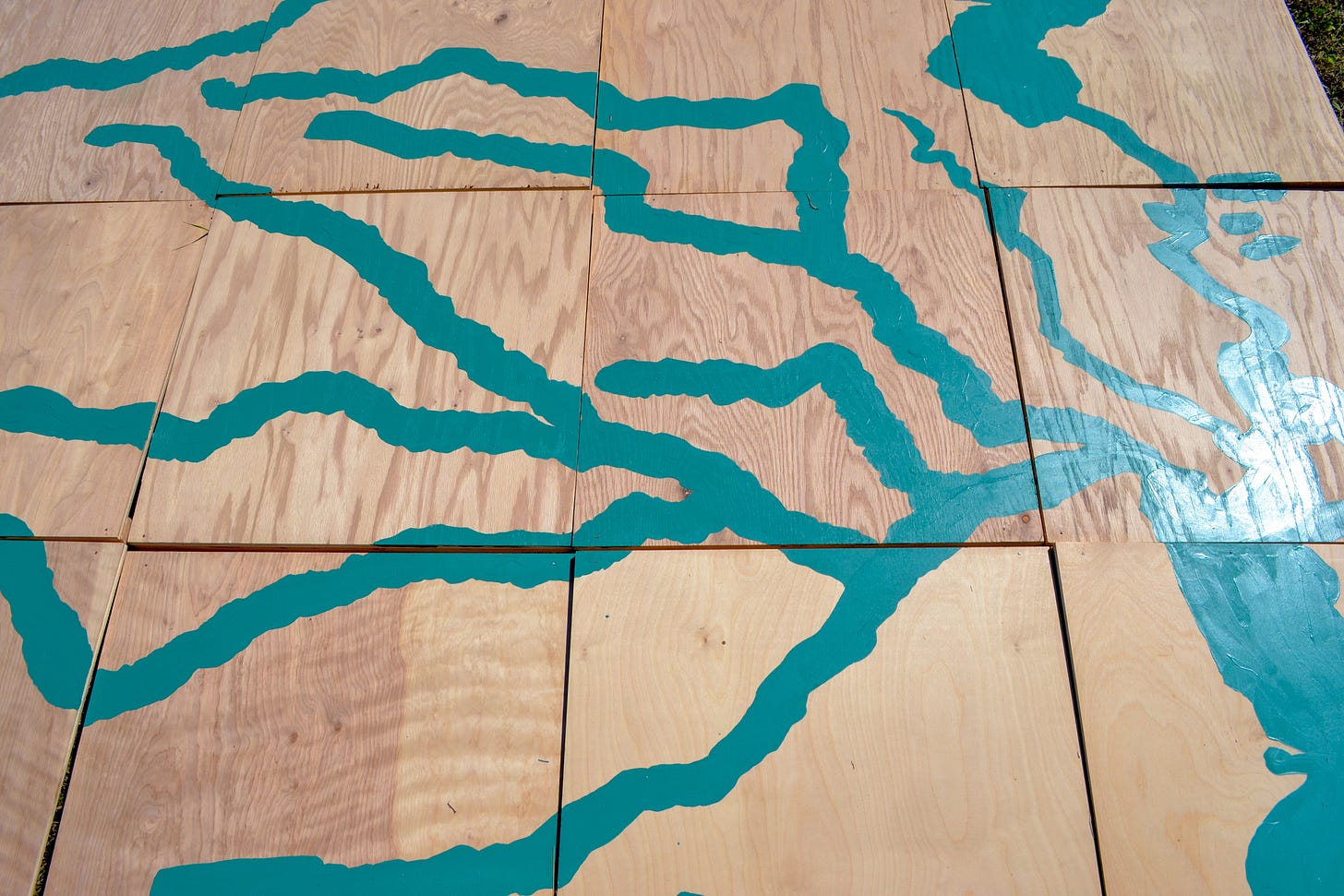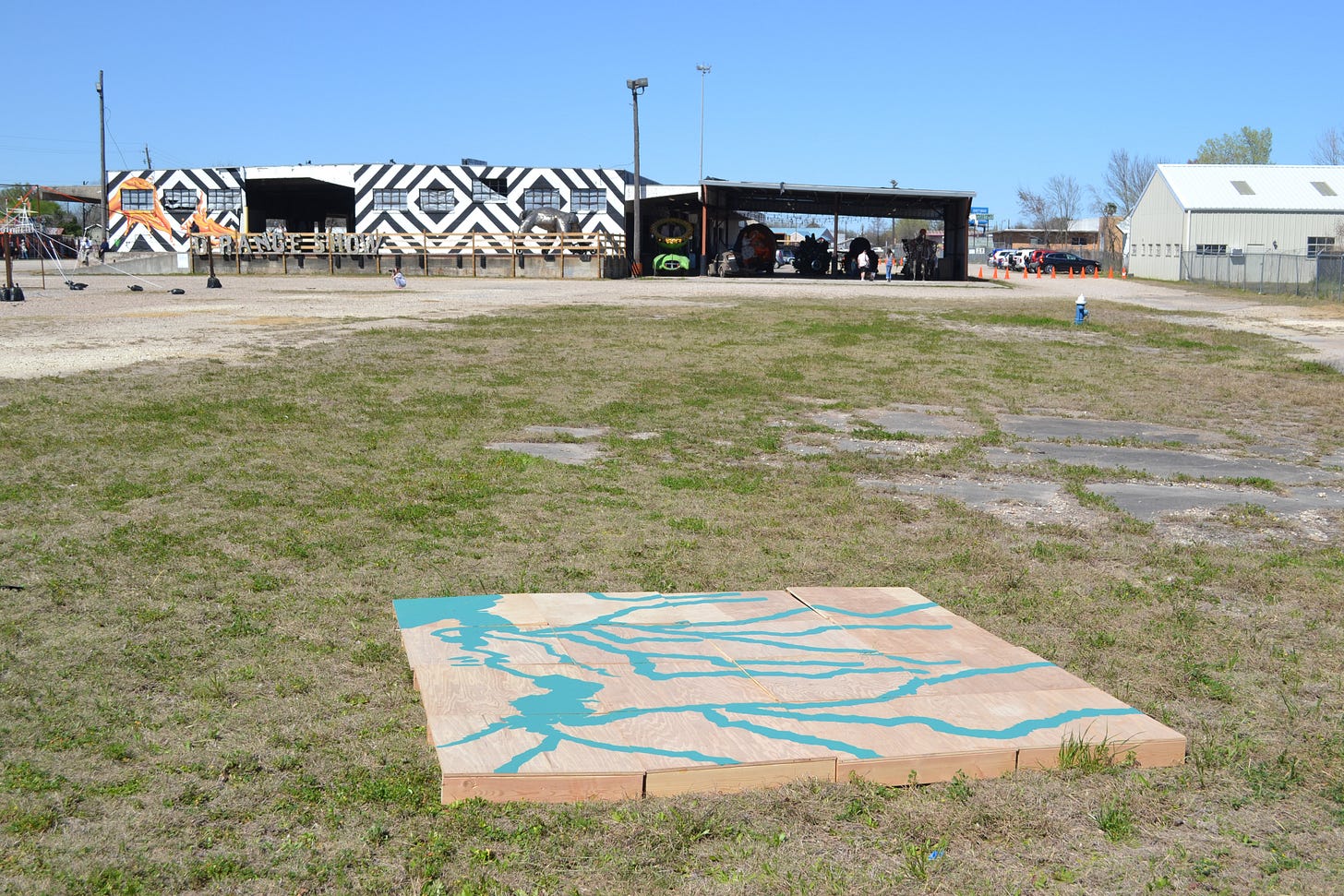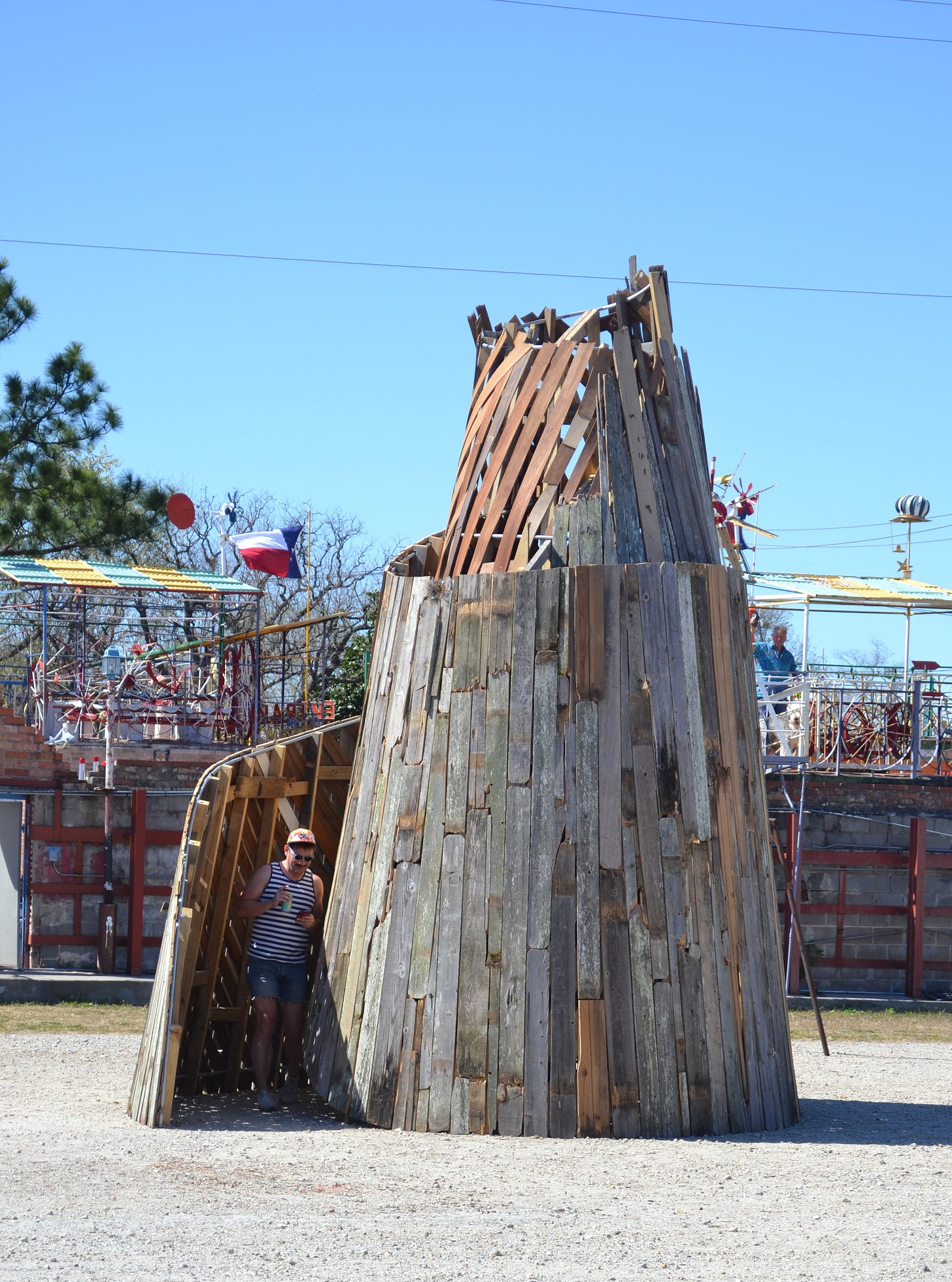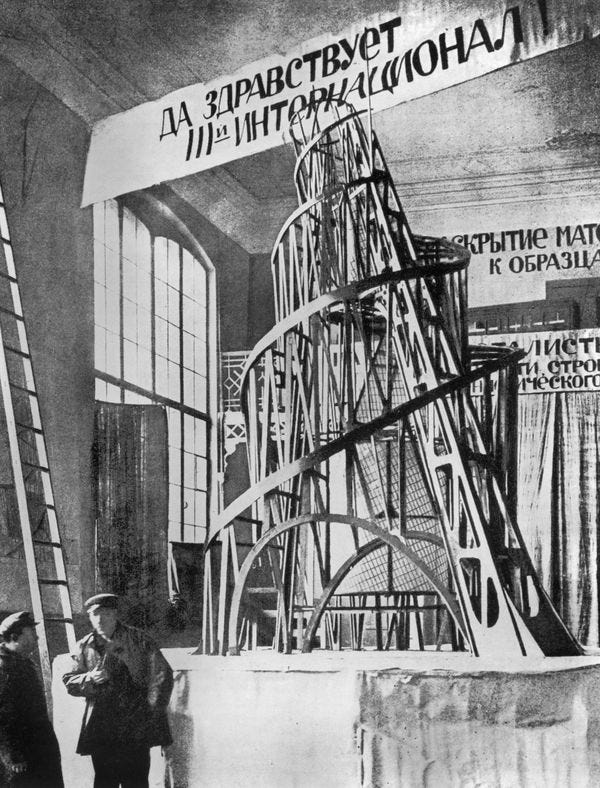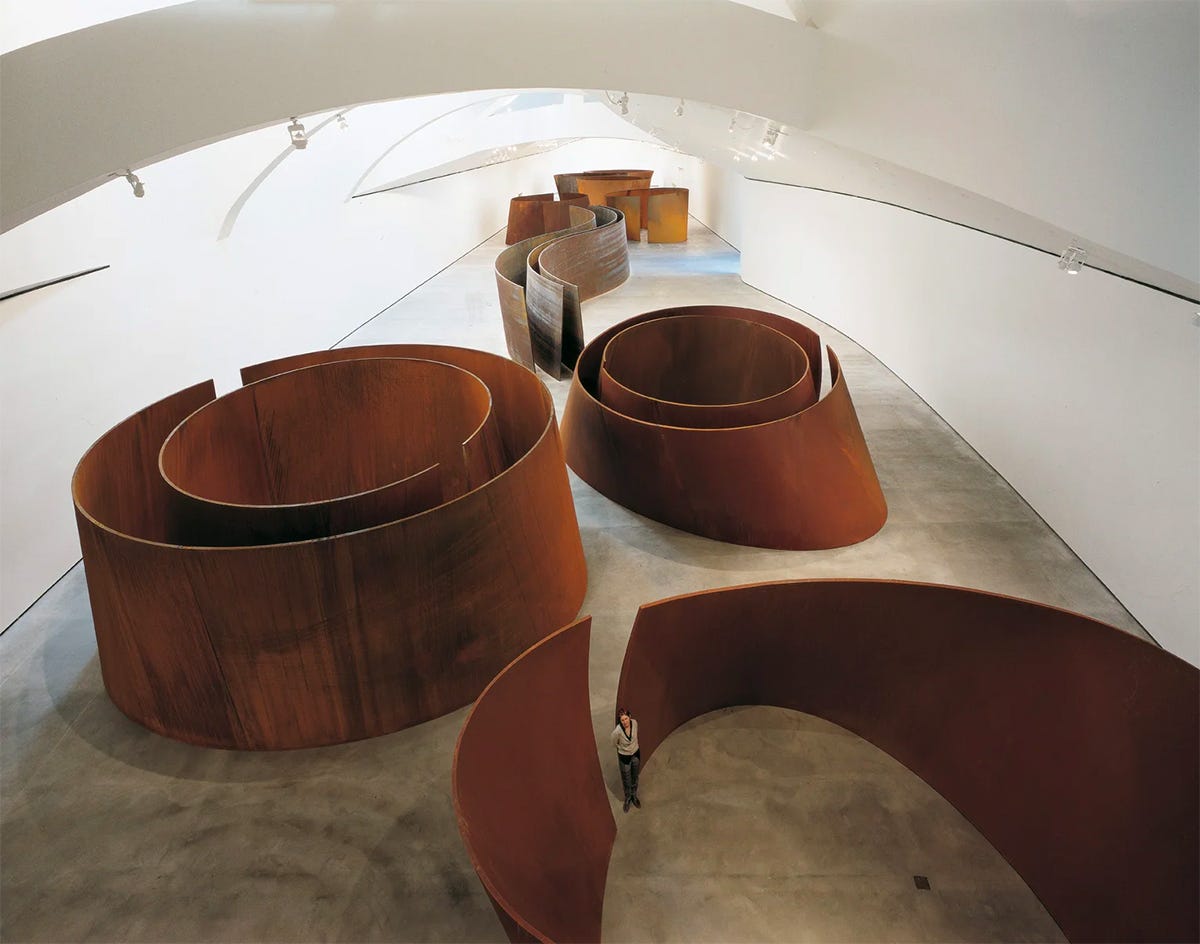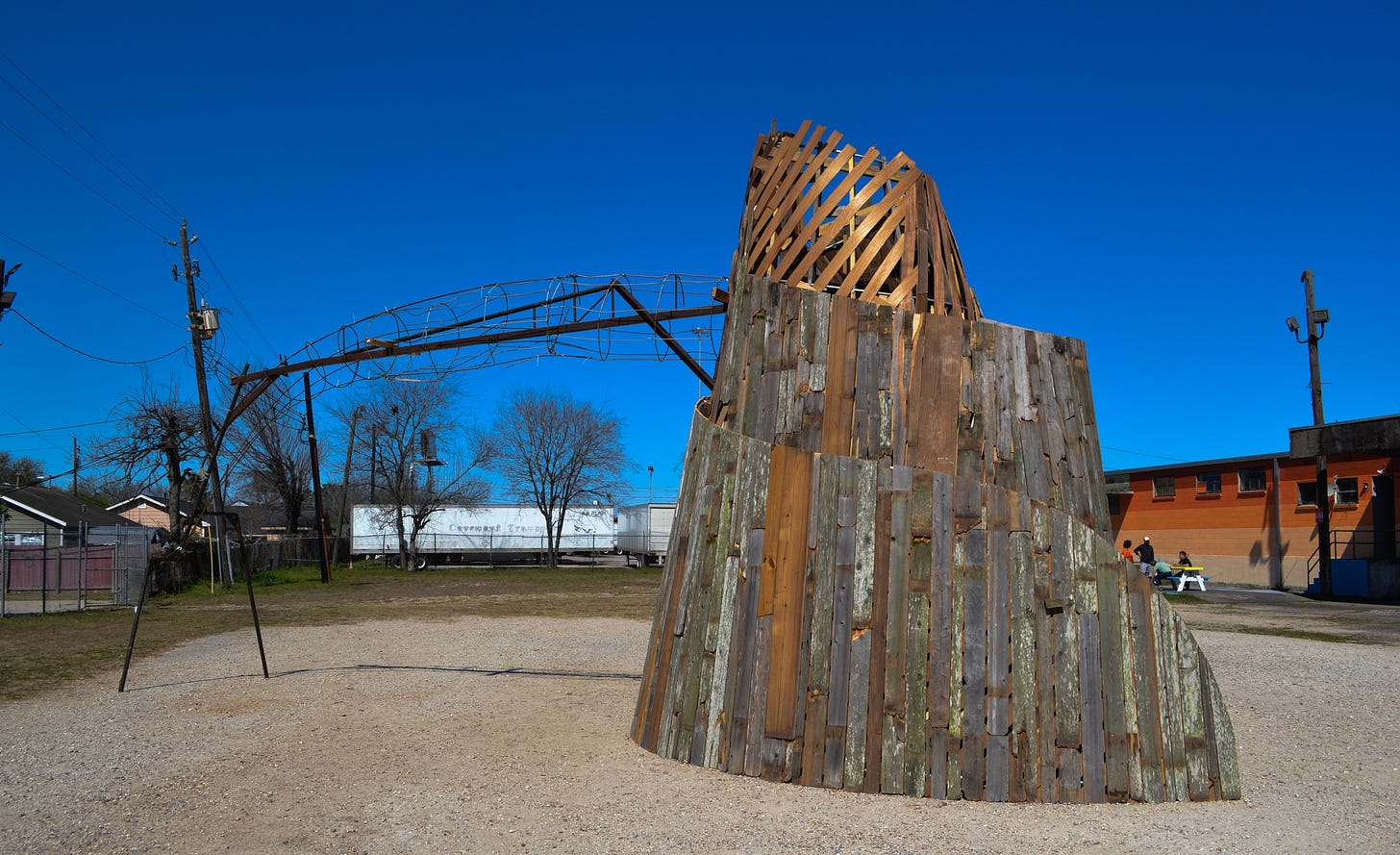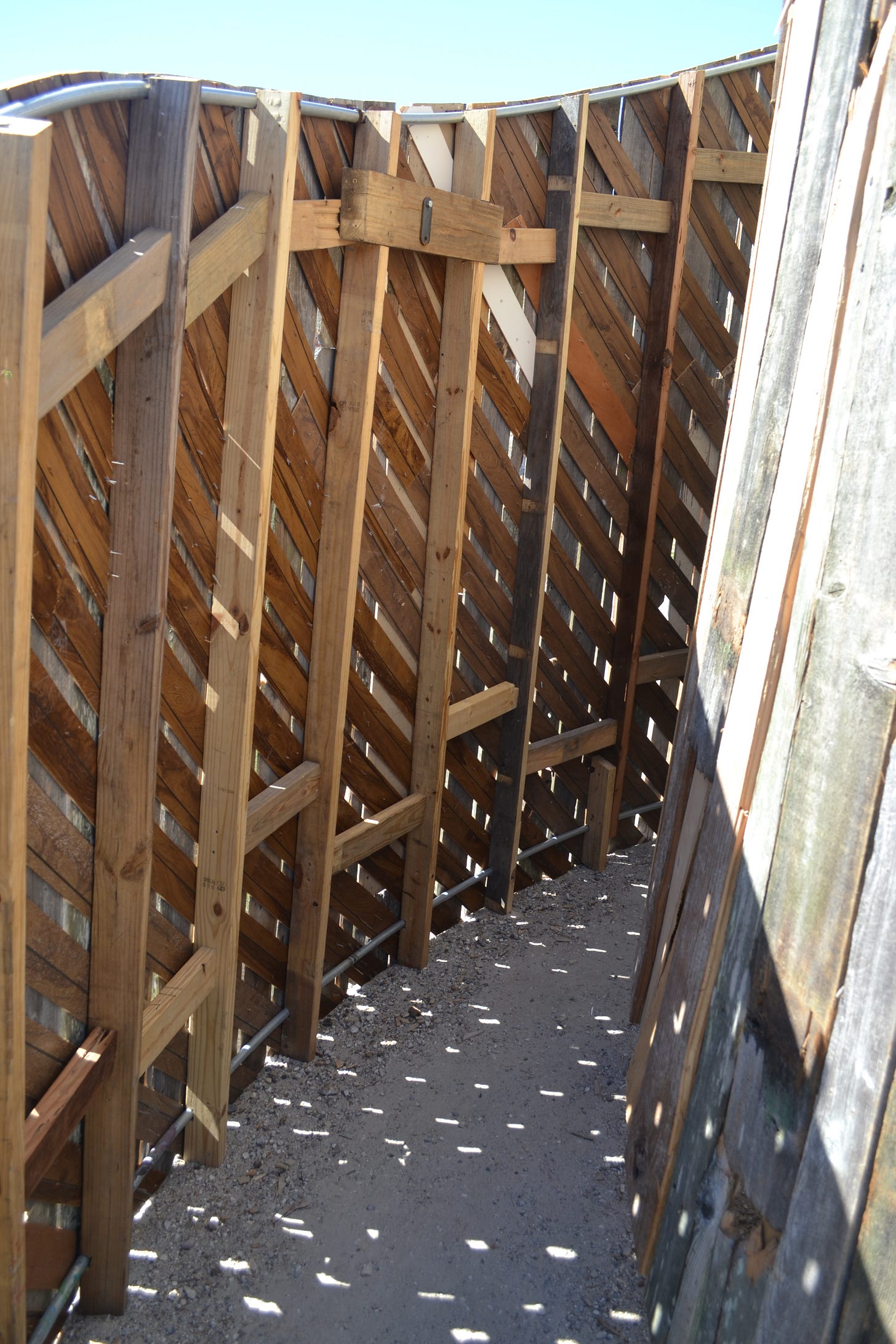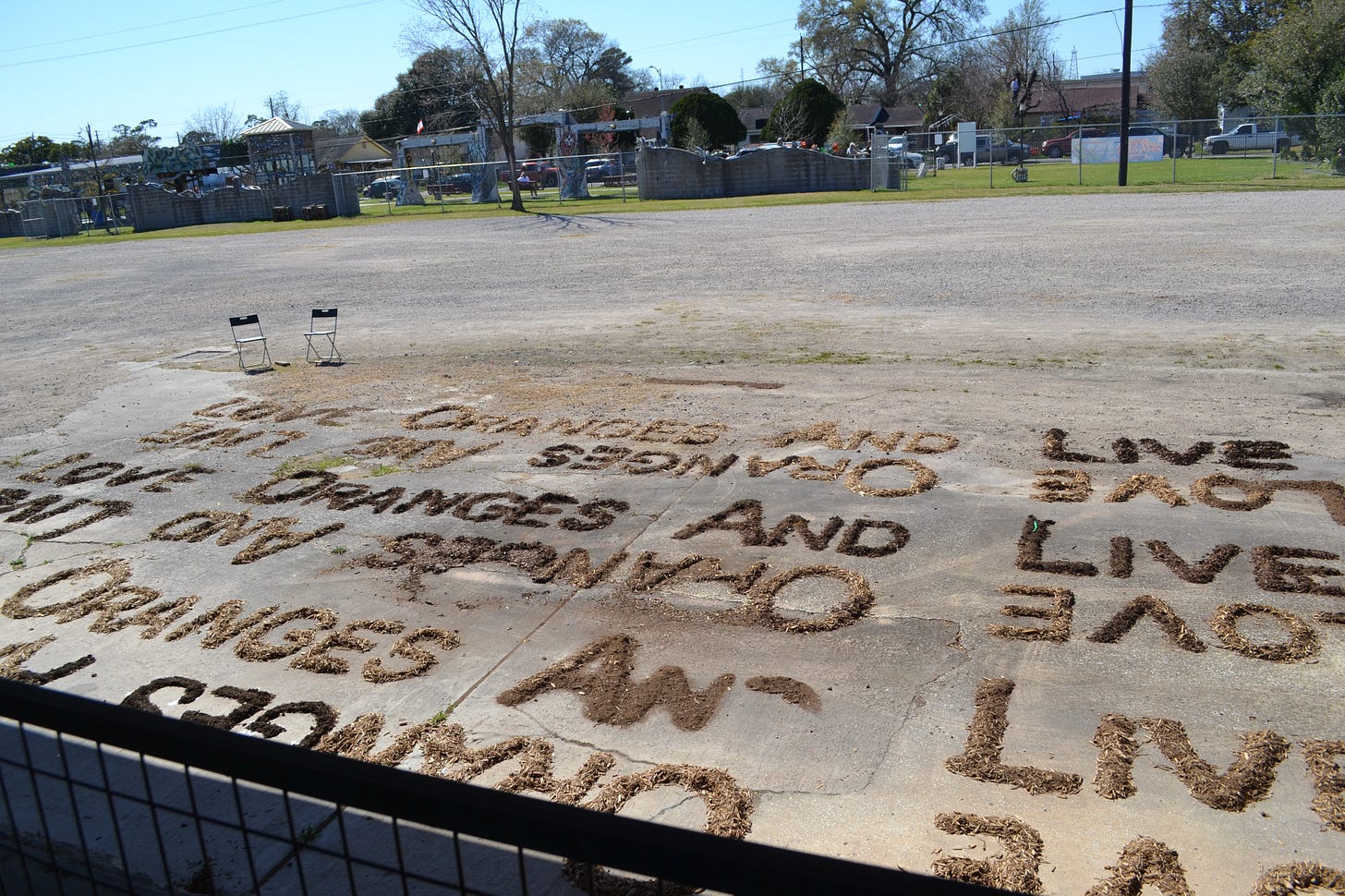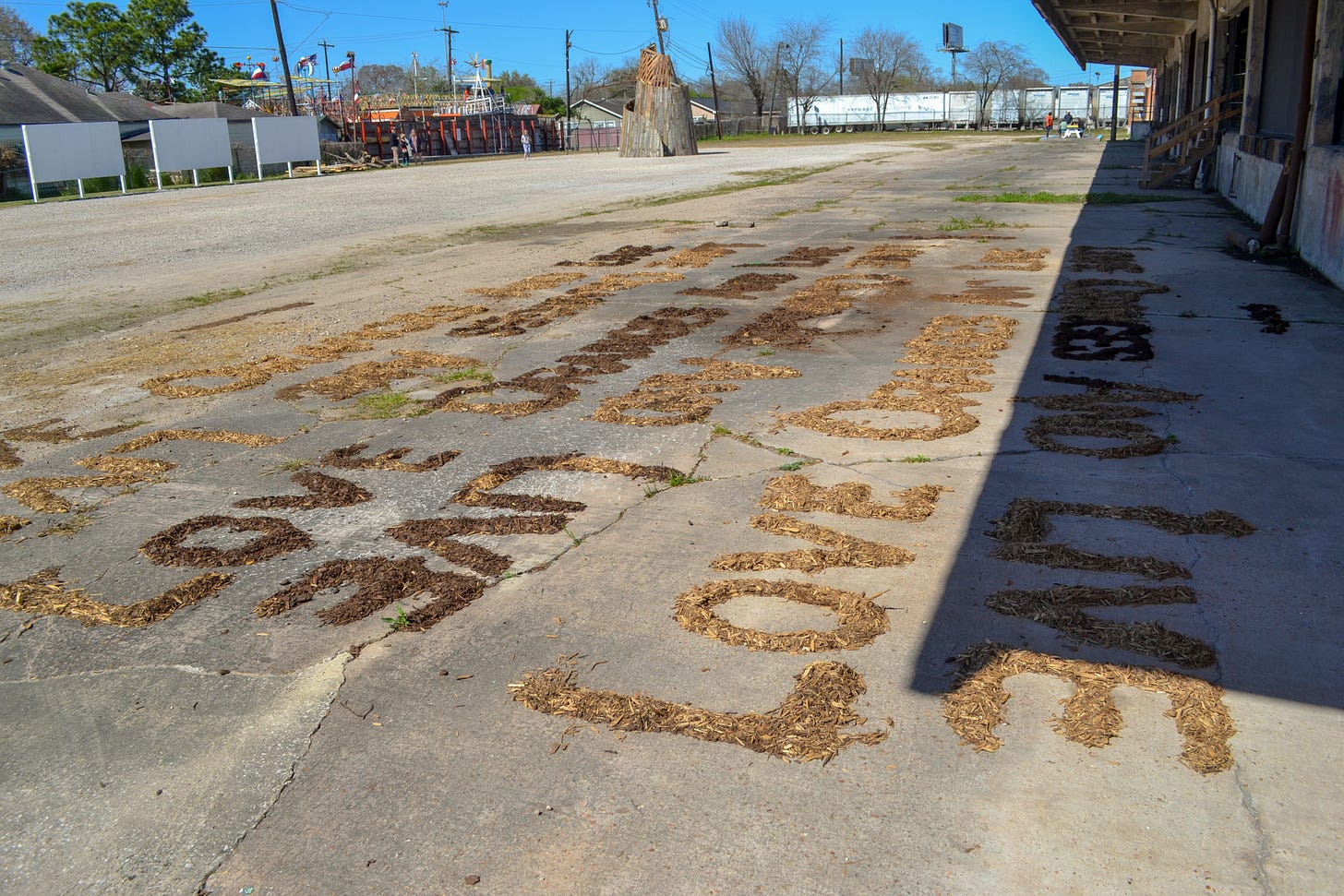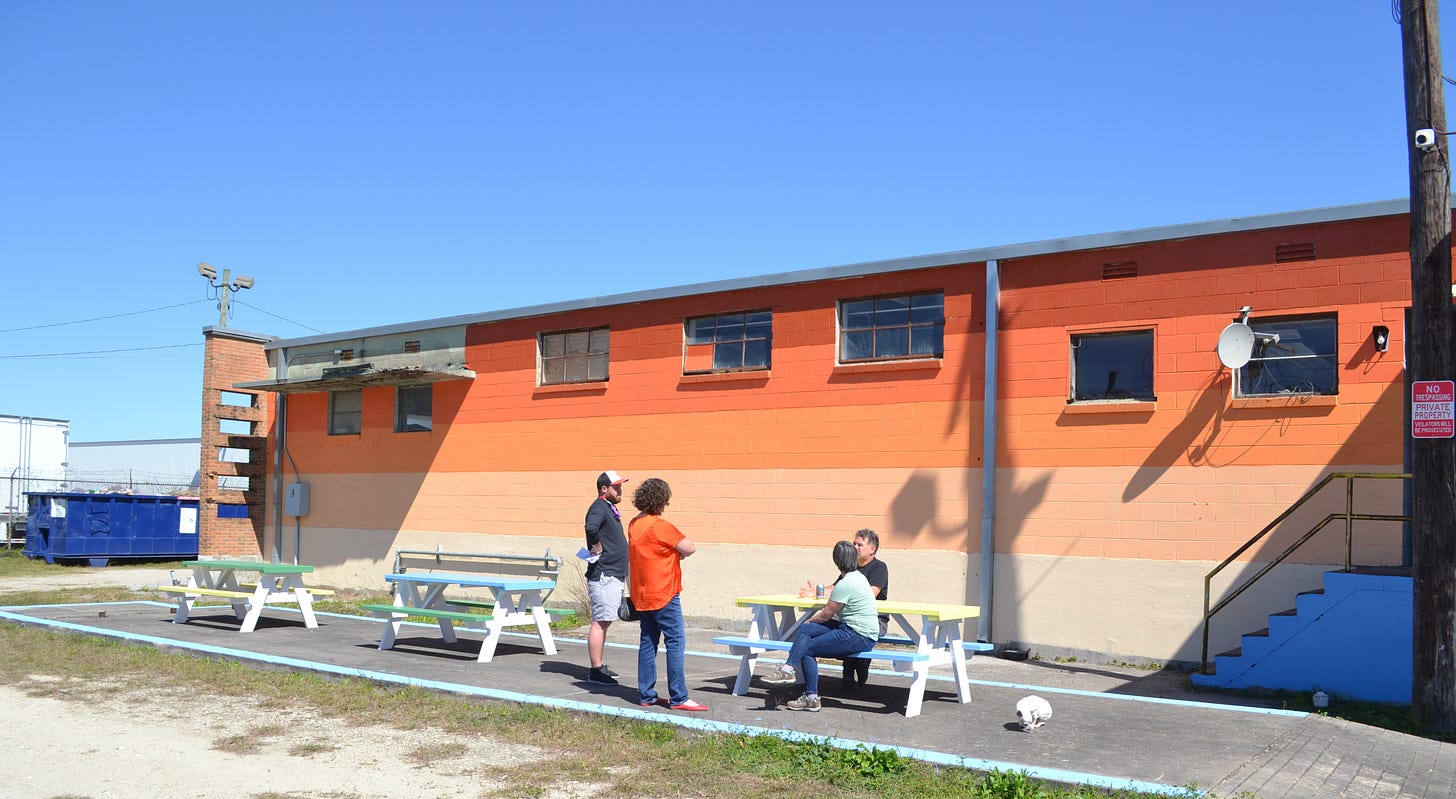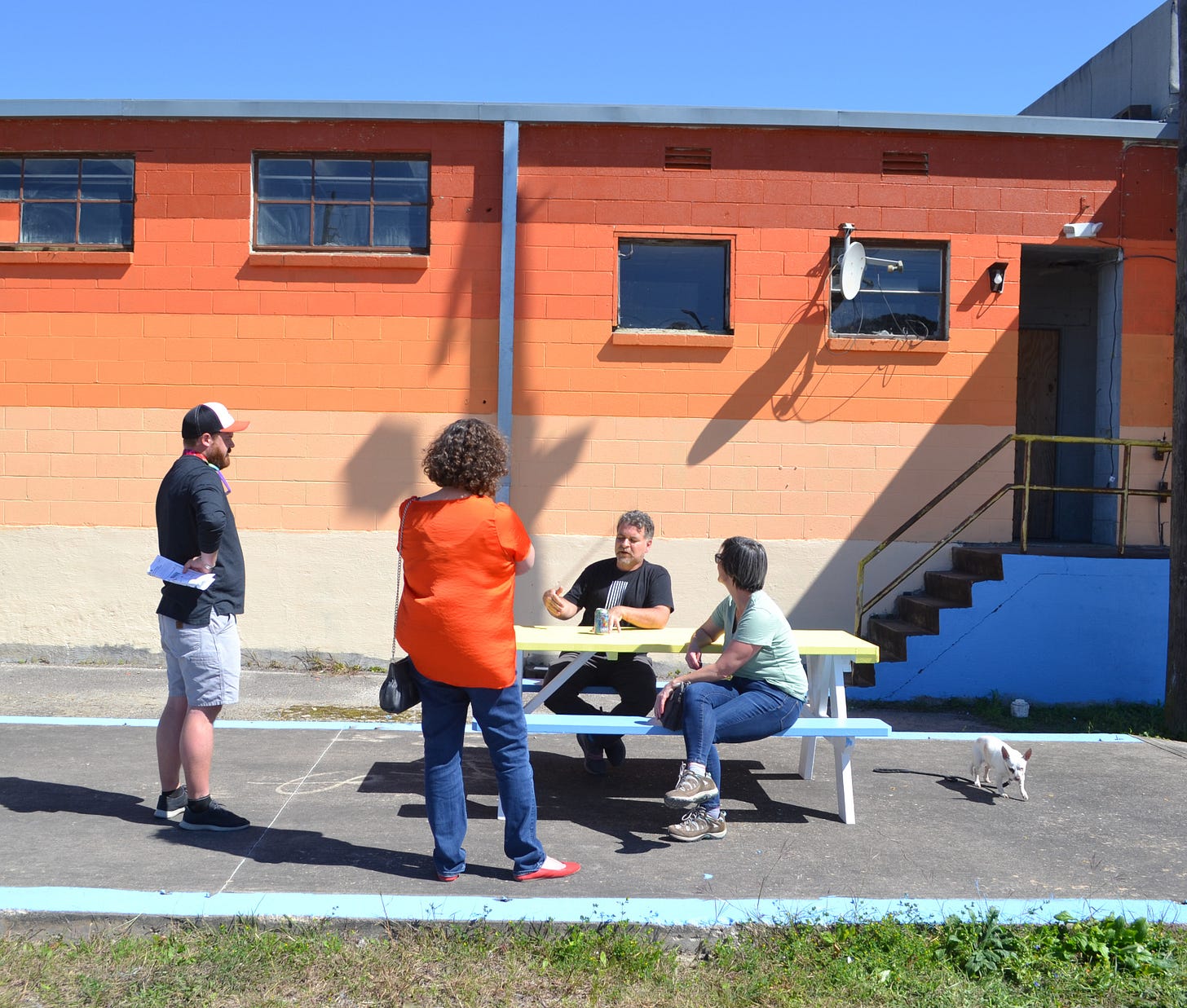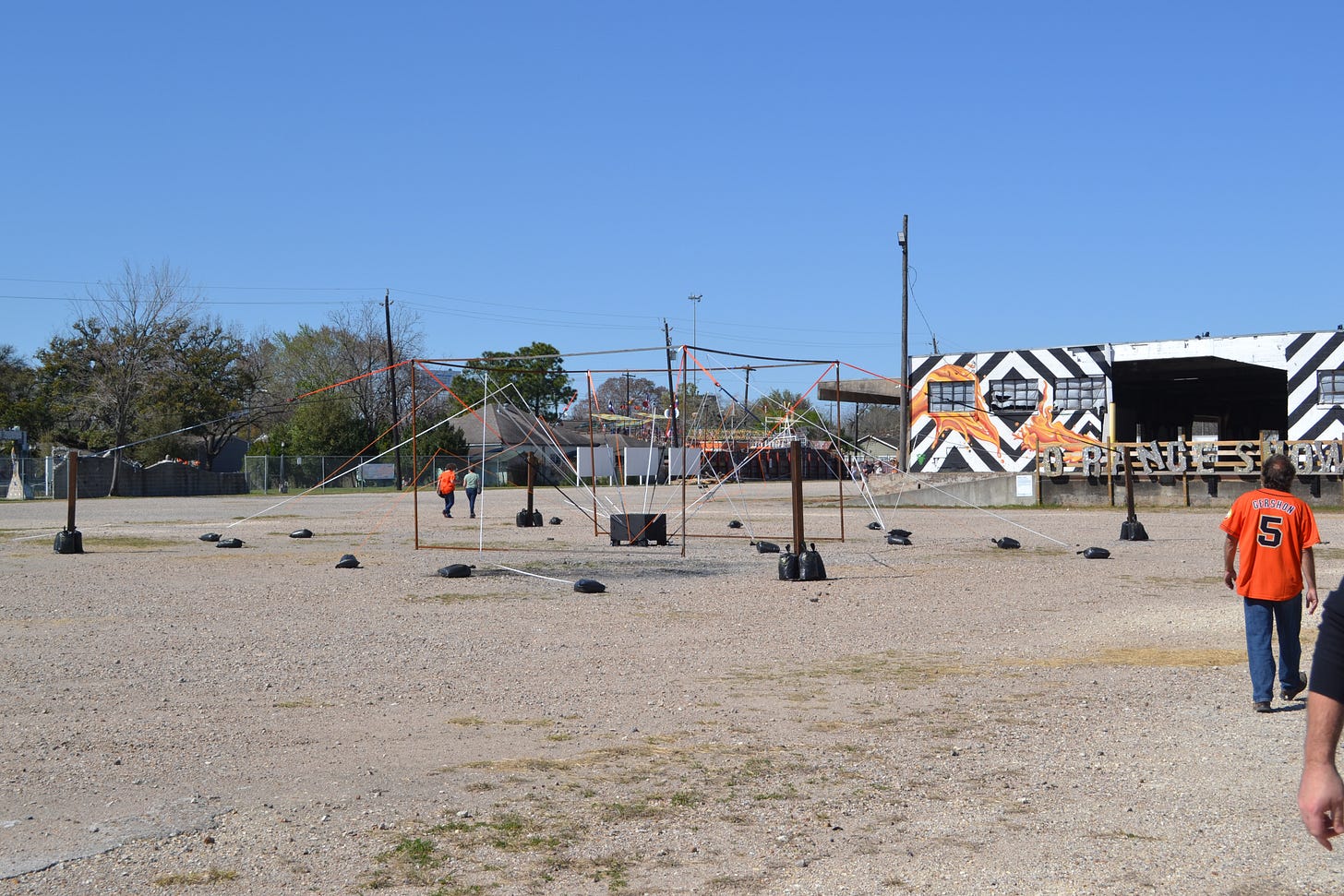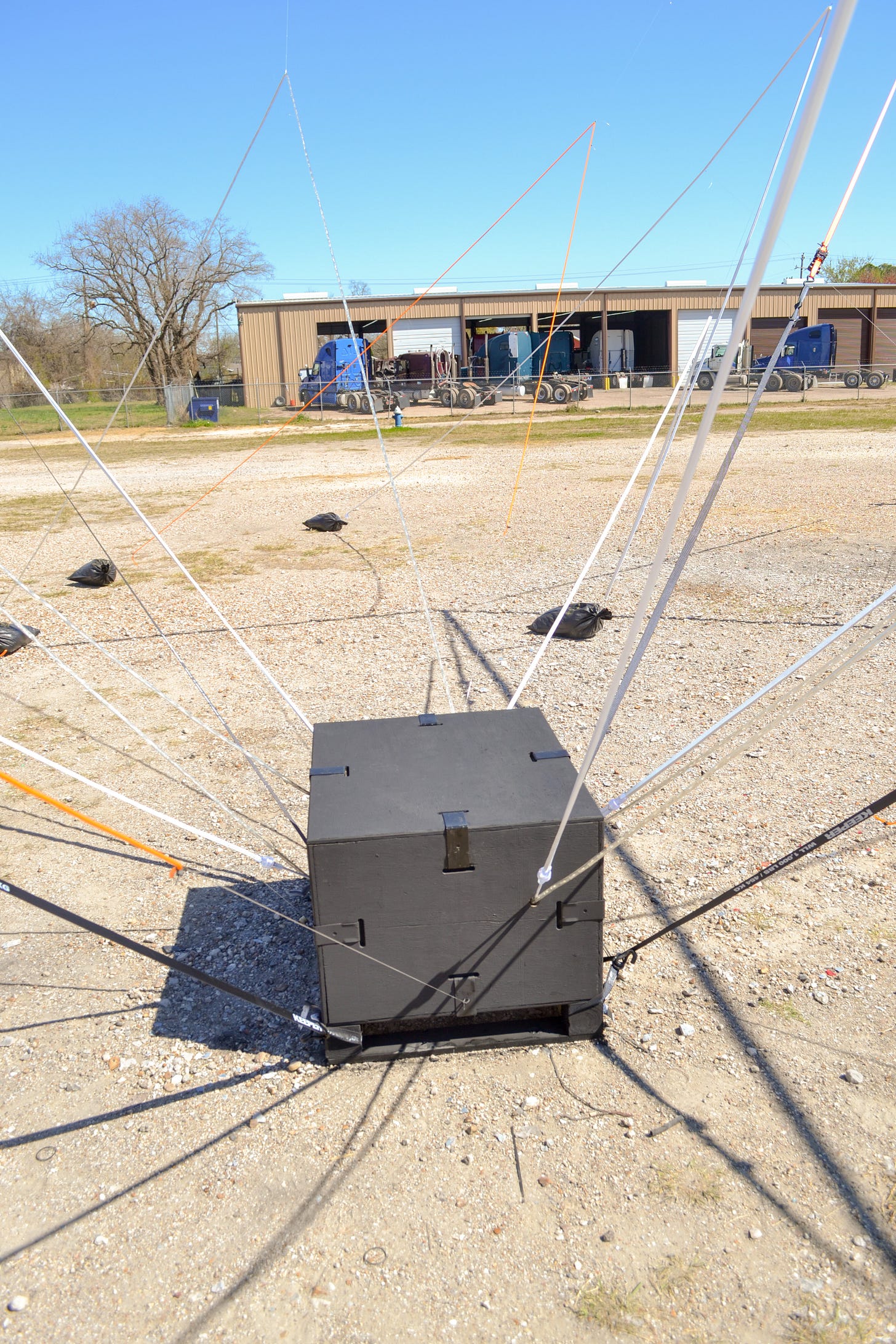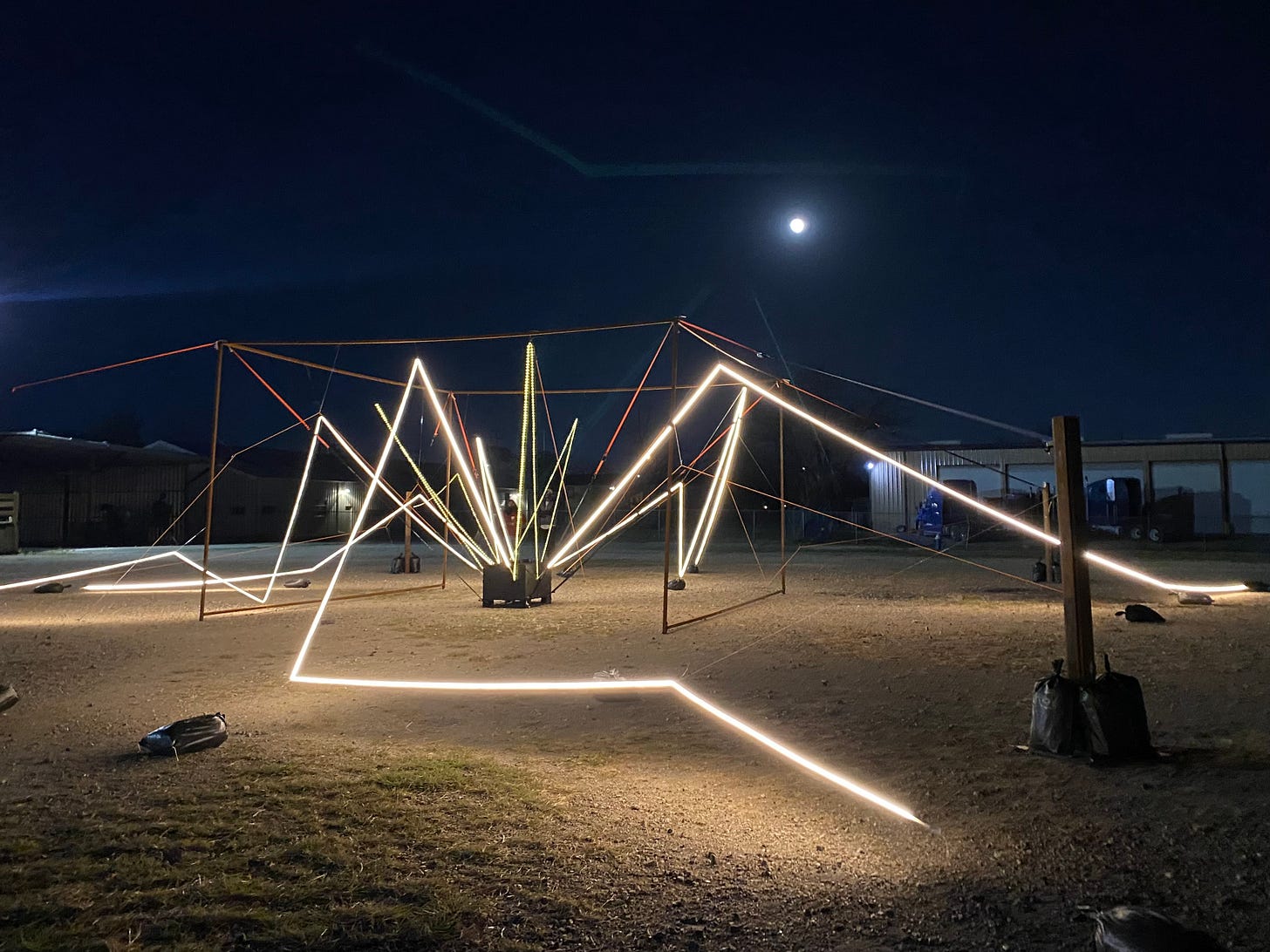The last day of winter here in Houston was magnificent. A perfect day to go to the Orange Show for their new exhibit, Entry Points. Six Houston artists made six large site-specific works, having to do with “the environment”, whatever that may mean to each artist. And their responses to this theme are varied.
The exhibit was held in space behind the Orange Show house. It’s a large parking lot and a building that used to be a pallet factory. The building is quite large, and open to the weather on the sides. It is where Zine Fest 2021 was held, and I think it will be a major part of the Orange Show in the future.
I don’t know how curator Pete Gershon explained the brief to the artists. He certainly told them where the show would be, that he wanted the works to be something that could facilitate community involvement, and that the works would be exposed to the elements, but I suspect that he mainly said that it should be site specific and that it has to do with the environment. It is these last two aspects that I want to address.
One way for art to be about the environment is to depict it. A landscape painting, for example, is connected to the environment. And there are two pieces in this exhibit that depend on a visual representation of the environment..
Jonathan Paul Jackson’s Forest Bathing is partially built from reclaimed wooden windows, but Jackson also drew leaves on the translucent green walls. The intent, I think, is to mimic that feeling of being in a sunny forest with the light shining through the trees. It is an art environment where the depiction of nature creates a womb-like experience.
His site is inside the pallet building. Sunlight illuminated Forest Bathing directly through skylights. It fails to be quite like a forest bath—too many right angles. Even the light shining through the skylight forms a square shape.
The other depiction of nature comes from Ayanna Jolivet McCloud. In one important aspect, her piece, Bayuk/Tributaries Map, relates to the traditional landscape. It’s painted on a support; it depicts the thing it is trying to represent. However, unlike the traditional European idea of a landscape as a window through which we see a landscape, it is a different kind of image—a map. It is interesting to think of landscapes and maps within the context of European art. The people who commissioned such objects were often claiming a kind of ownership. I own the image, therefore I own the thing depicted.
This is clearly not the what McCloud is all about. However, maps are depictions of land that has been explored, and exploration is historically followed by colonization. Houston’s location as a town was decided by the bayous—specifically Buffalo Bayou, on whose shores the settlements of Harrisburg and later Houston were established.
Her map would not be particularly useful to would-be land developers: it is unlabeled and the bayous themselves are depicted as much wider than they are in real life. The thick blue shapes that McCloud drew could be interpreted as flood-plains, I suppose. And since McCloud is personally concerned with the wetlands of the Houston area (as executive director of Bayou City Waterkeeper), I feel OK interpreting the thickness of the bayous on her map this way.
The location of the piece was interesting. Because the panels were laying flat on the ground, projecting up a couple of inches at most, they were not easily visible. They were a long way from the old pallet factory building in a grassy section of the parking lot. Apparently, McCloud requested that it be displayed on grass, and by being a long way from the building, it reemphasized its connection to nature.
Another way to address the environment is a work of art is to use salvaged materials to create your piece. As Dan Phillips said, his goal in designing and building houses for the Phoenix Commotion, was to intercept and reuse refuse before it ended up in a landfill. The artist in this show who best exemplifies this idea is Patrick Renner. I wonder how much of his work ends up in a landfill, though, since it isn’t always permanent. And I suspect that his piece here, Hermitage, will end up trashed at some point. I don’t see it being a permanent installation, but perhaps it will be.
When I saw his tall, wooden structure, I was struck by its similarity to Vladimir Tatlin’s Monument to the Third International, which was meant to he an Eiffel Tower-like monument for the newly formed Soviet Union.
When you enter the structure, it spirals in on itself, which reminded me of some of Richard Serra’s sculptures, like his Torqued Ellipses.
But Tatlin’s work was all about celebrating material progress, while Serra is exploring the formal qualities of his material. Neither is concerned with the environment. But Renner’s ramshackle installation is so concerned, at least insofar as it is made from refuse.
Another installation that is formed from refuse is Emily Sloan’s Love Oranges. She uses a quote from Jeff McKissack on the walls at the Orange Show, about 100 feet from this installation. The quote is “Love Oranges and Live.” She has written this phrase six times on the parking lot beside the pallet factory. The letters are formed from dirt and leaves swept together by Sloan, and the letters are about two feet tall.
This is an installation guaranteed to return to a natural state fairly quickly. The leaves and dirt are piled up into legible letters, but a strong wind will erase them. That said, it has rained several times since it was installed (including one day last week with high winds), and while some of it has been erased by natural processes, much of it is still legible.
By allowing the work to be vulnerable to natural processes, and by making out of the kind of stuff we normally sweep up and throw away, Sloan has created an environmental work par excellence. Its connection to the Orange Show is icing on the cake.
An artist can depict nature or intervene in nature, but I can think of at least one other form of environmental art—art that engages directly with people. Gabriel Martinez’s piece, Faded, is this kind of work. It consists of a mural (I don’t know if Martinez painted the orange stripes on the building or if he found it that way) and picnic tables.
The idea is that people can congregate there. Ideas can be shared. Kind of a relational piece then. And like all relational art I’ve seen, there is not much in the way of visual pleasure. But it does, in some way, point to a future for the Orange Show. Pieces like this are less about a curatorial vision than about a discussion. And there has been a discussion going on over the past year about what The Orange Show means to Houston. And I assume this discussion will continue—perhaps at these very picnic tables.
The last piece in the show is A Spark [That Spirals Out] by Ronald Jones. Of all the pieces, it had the least to do with the environment as a subject. It is sitting in the parking lot just south of the pallet factory. It consists of a large metal frame, about 12 feet high and maybe 20 feet on each side. In the center is a black box, which I am guessing is a generator or battery.
From the box, wires are strung over the metal frame and anchored to the ground outside the frame. The wires are EL wire, a kind of wire that glows when a current is run through it.
This piece is pretty unimpressive during the day; it is really meant to be seen at night. I haven’t seen it at night, but the Orange Show provided me with a couple of photographs, and it looks spectacular when it is lit up.
The pallet factory is still kind of a weird space for artwork, and it is separated from the Orange Show and Smither Park by a chainlink fence. The fence has gates, but they are usually locked. In short, the pallet factory part of the Orange Show is not organically connected to the rest of it. If one comes on a Saturday for a picnic in Smither Park—which people were definitely doing when I was there—they can’t easily take part in activities at the pallet factory. If the pallet factory is to become an important part of the Orange Show, it needs to be better integrated with the Orange Show house and Smither Park. As a space for events, the pallet factory has proved its value, hosting Zinefest and now Entry Points.
[Please consider supporting my work by becoming a patron, and you can also support my work by patronizing my online store. And one more way to support what I do here is to buy books through my bookstore. ]




